Little Berlin’s current exhibition, The Edge of Precarity, is an exploration of labor led by working artists. It showcases works by Stephanie Cayer, Sarah Heyward, Sarah Grisham, and Gabrielle Constantine: all of whom graduated from Tyler School of Art within the past two years. I was lucky enough to meet these artists in school. They are just a few of the many young adults now faced with astronomical student debt.
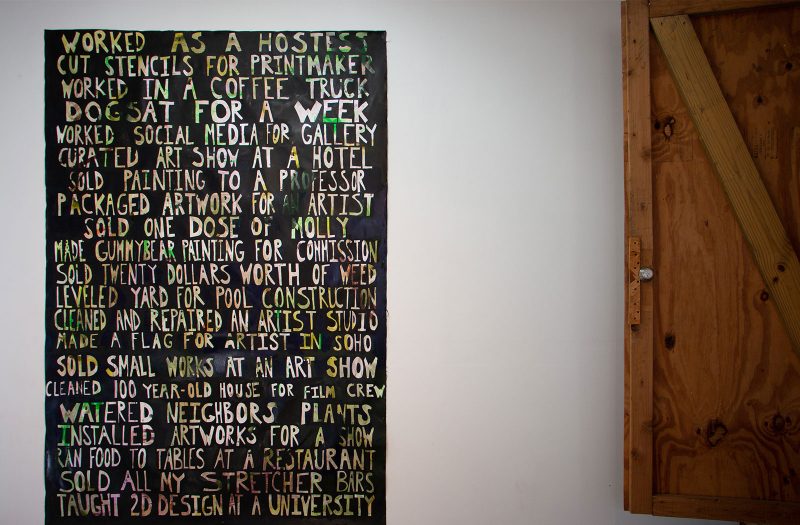
In debt and underpaid
I sat down with the curator, Danielle Degon to learn more about the project. She recently traveled to Hong Kong to attend the Tai Kwun “Summer Institute- Labor and Privilege” a two week long contemporary art program. In her gallery guide, she writes “The post-recession economy in the U.S. has been taken over by work in the service industry. This economic shift, compounded by stagnant wages and the $1.5 trillion national student debt crisis, is forcing artists to precarity.” When I asked her to comment further, she stressed: “It’s not just these artists [who are affected]. It’s not even just artists. This show is a critique on alienated labor and late stage capitalism”.
The paintings and sculptural works in The Edge of Precarity facilitate spatial and monetary transactions. Upon entry viewers are confronted with Sarah Heyward’s large, unstretched painting titled “$, 2017” which lists jobs and alternative wage earning techniques used to support her artistic practice. Amongst these is “Sold all my stretcher bars.” Stephanie Cayer’s “You Belong to Me,” a sculpture about employer/employee power dynamics, sits nearby. Sarah Grisham’s two-part piece entitled “Magic Should Not Be Performed for Pay” allows guests to own her handcrafted receipt paper logs and unlucky pennies, items that she says “record a portion of uncompensated labor performed by the artist.” While Hayward and Cayer focus on physical and mental exhaustion, Cayer and Grisham speak to the viewer about emotional turmoil. All of these artists present poignant evidence of capitalistic damage.
Is art labor?
The gallery is overwhelmed—in the most satisfying way— by Gabrielle Constantine’s interactive motorized sculpture, “The Creative Class: there may be blood between the white bread, but you’re still late to the funeral.” The artist uses a dry cleaner conveyor to carousel hand-sewn clothes. Each article of clothing is a collage of trendy and brand name items restructured to resemble blue-collar apparel. A pair of overalls is patterned with the Louis Vuitton logo; a pair of blue jeans is reconstructed in crushed velvet. Everything displayed is for sale, and viewers are even invited to operate the machine. Constantine’s work acknowledges artists’ complicity in capitalism and the desire among members of the creative class to be categorized as laborers. She also calls to attention the privilege required to dress the part of laborer while accepting no wages. It is a privilege to study and create art. It is also a privilege to be unconcerned with the stifling wage gap and increasing cost of education.
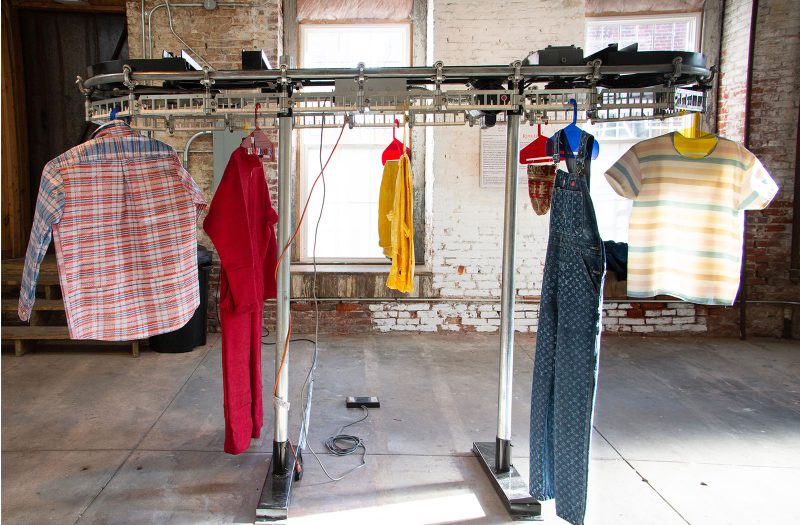
The Edge of Precarity blends fresh humor with meticulously edited text about systematic debt. It is a call to action for Philadelphia artists. The exhibition was closed early due to scheduling complications, but for more information, including a zine written by the curator, click here.
Support the contributing artists by visiting their websites: Stephanie Cayer, Sarah Heyward, Sarah Grisham, Gabrielle Constantine.
More Photos
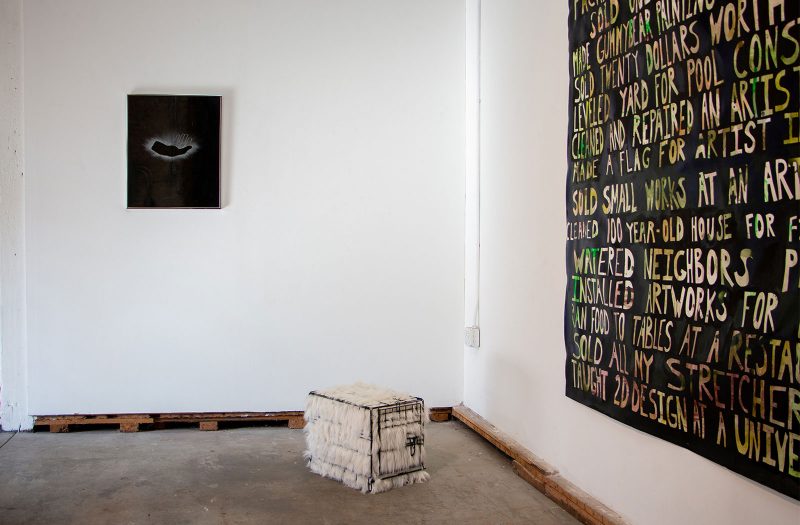
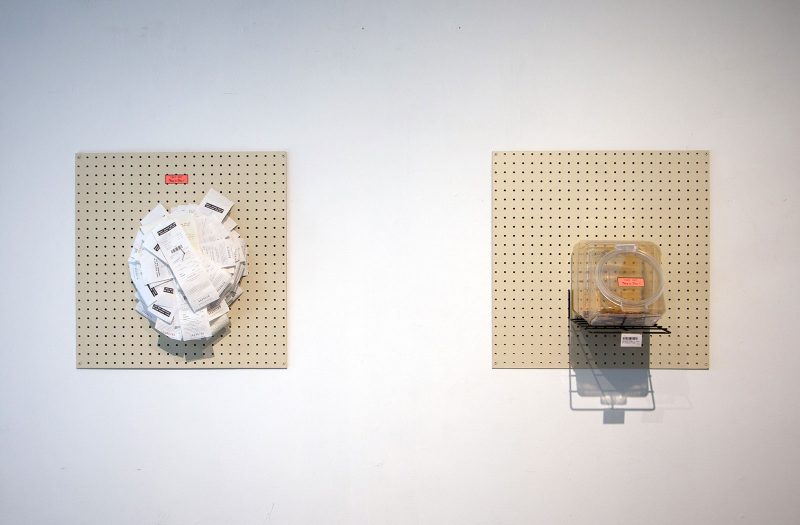
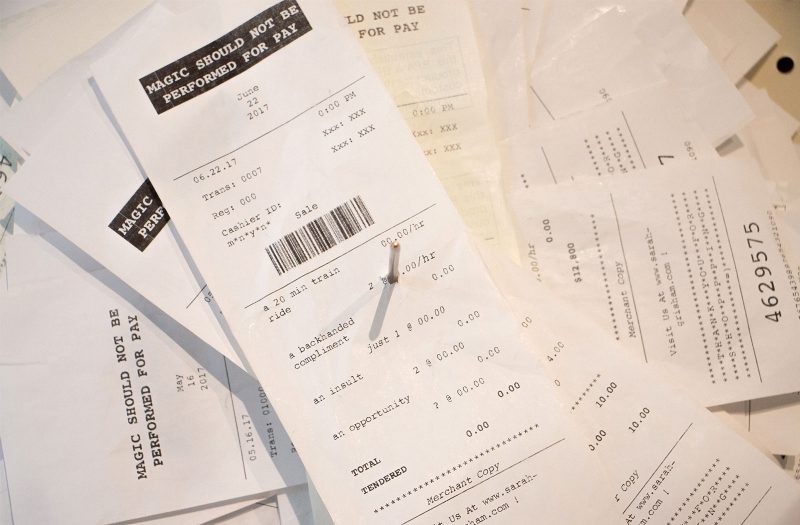
Morgan Nitz is a queer, Philadelphia based artist working primarily in video, installation, and writing. Her work performs acts of translation, filtering research on phenomena like string theory, the technological singularity, or the marching band conductor through mediums of poetry, video, and sculpture. She has exhibited at The Institute of Contemporary Art, Vox Populi, Pilot Projects, The Legume Room, and Philly Improv Theatre.





